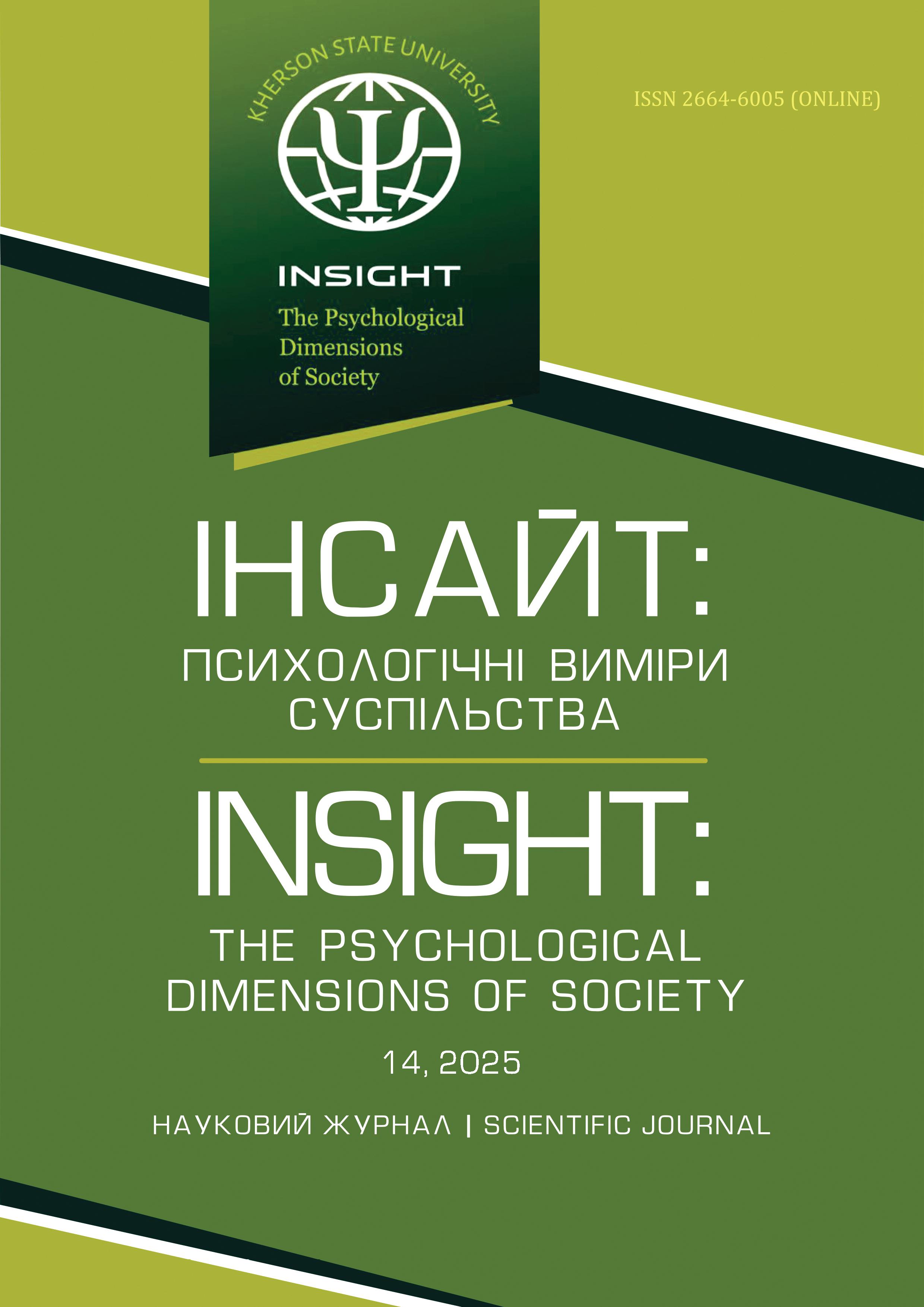ISSN 2663-970X
e-ISSN 2664-6005

Terms
The Article’s Structure and Requirements for Manuscript Text Design
n – sample size;
n1, n2, nk, – the number of groups identified in the sample 1, 2, k;
М – the distribution’s mean;
Me – the distribution’s median;
Mo – the distribution mode;
Mo1, Mo2, Mon – the multimodal distributions’ mode values;
min, max – the distribution’s minimum and maximum value;
Rng – the distribution range;
Q1 – the distribution’s first quartile value;
Q3 – the distribution’s third quartile value;
Qrng – the distribution’s interquartile range;
SD2 – the distribution’s variance;
SD – standard deviation;
SE – standard error;
CV – coefficient of variation;
H0 – the null hypothesis;
H1 – an alternative hypothesis;
df – the number of degrees of freedom;
R – Pearson’s correlation coefficient;
rs – Spearman’s correlation coefficient;
R2 – determination coefficient.
Каленчук В. О. Соціальний статус студента як чинник оцінки організаційної культури університету. Інсайт: психологічні виміри суспільства. 2019. № 2. С. 72–77. https://doi.org/10.32999/2663-970X/2019-2-10
Kalenchuk, V. O. (2019). Sotsial’nyy status studenta yak chynnyk otsinky orhanizatsiynoyi kul’tury universytetu [Student’s Social Status as a Factor of Assessment of the University’s Organizational Culture]. Insayt: psykholohichni vymiry suspil’stva – Insight: the psychological dimensions of society], 2, 72–77. https://doi.org/10.32999/2663-970X/2019-2-10
Плохіх В. В. Обмеження психологічних захистів на формування часової перспективи студентів. Інсайт: психологічні виміри суспільства. 2022. № 8. С. 39–55. https://doi.org/10.32999/2663-970X/2022-8-4
Plokhikh, V. V. (2022). Limitation of psychological defense on the formation of students’ time perspective. Insight: the psychological dimensions of society, 8, 39–55. https://doi.org/10.32999/2663-970X/2022-8-4
Hudimova, A., Popovych, I., Savchuk, O., Liashko, V., Pyslar, A., Hrys, A. Research on the relationship between excessive use of social media and young athletes’ physical activity. Journal of Physical Education and Sport. 2021. 21(6). P. 3364-3373. https://doi.org/10.7752/jpes.2021.06456
Hudimova, A., Popovych, I., Savchuk, O., Liashko, V., Pyslar, A., & Hrys, A. (2021). Research on the relationship between excessive use of social media and young athletes’ physical activity. Journal of Physical Education and Sport, 21(6), 3364-3373. https://doi.org/10.7752/jpes.2021.06456
Rules for Creating Links to the Sources Used
According to the example, references to the sources used are only given in round brackets in the text:
… It appears logical to examine genera-species relationships in a historical context, allowing us to trace the origin, development, and formation of the problem of individual social expectations (Popovych, 2017).
If the source page is mentioned, it is followed by a colon, as in:
… Individual social expectations are a process of mental regulation of behavior that is ensured by the individual’s cognitive, emotional, and behavioral readiness for the expected course of events (Popovych, 2017: 68).
An example of the monograph design in the Ukrainian version of the List of Used Sources (link from the KhSU repository):
Попович І. С. Психологічні виміри соціальних очікувань особистості. Херсон: ПАТ “ХМД”, 2017. 504 с. http://ekhsuir.kspu.edu/handle/123456789/6466
An example of the monograph design in the English version of References, using transliteration (link from the KhSU repository):
Popovych, I. S. (2017). Psycholohichni vymiry socialnych ochikuvan osobystosti [Psychological dimensions of social expectations of personality]. Kherson: PJSCo “KTPH”. http://ekhsuir.kspu.edu/handle/123456789/6466
Requirements for References and List of the Sources Used:
Final provisions
Thank you for your cooperation and contribution to science!
 The works is licensed under a Creative Commons Attribution 4.0 International License.
The works is licensed under a Creative Commons Attribution 4.0 International License.

